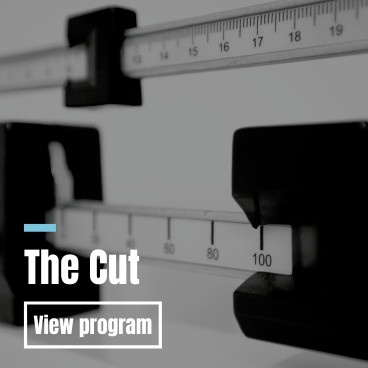Weight Cut Mastery: The Fighter's Blueprint for Peak Performance
Unlock 'The Elite Cut Advantage' - A Game-Changing Strategy for Fighters and Grapplers. Harness Expert Techniques, Cutting-Edge Research, and Battle-Tested Plans to Master Your Weight Cut. Transform Your Approach, Make Weight Effortlessly, and Step into the Ring at Your Strongest.
Making weight is a necessary evil for combat athletes…
Weight classes allow athletes to compete with similar sized opponents…
But, the downside is that many athletes end up trying to cut too much weight, using questionable methods, to gain a perceived advantage over their competitors.
When done incorrectly you can sacrifice months worth of training and come out “FLAT”… Worse yet, many athletes have ended up in the hospital by using dangerous methods to make weight.
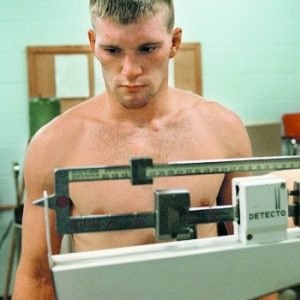
Done correctly, and we can reduce risk and stress on the body and retain high levels of energy and perform when you need it most.
The problem is that there are very few resources that allow you to understand the weight cut process and help you implement good practices, so you are safe and able to compete at the highest levels.
- What weight class is right for you?
- How much weight should you cut?
- How long do you need to prepare before a competition?
- What methods should you use to cut weight?
- What type of foods should you eat after weigh ins?
- What differences are there between various sports?
Planning for the event, preparing for the cut, cutting weight, and refueling after weigh ins are all vital components of a successful weight cut.
Do it right and you can have a significant advantage over the competition.
Do it wrong and all of your hard work can go out the window.
Enter Coach Ben Zhuang…
Ben Zhuang started his career as a personal trainer and nutritionist in 2003. After working at various commercial gyms, he transitioned to becoming a strength and conditioning coach in 2008 and began working exclusively with athletes.
Over the years he’s worked with athletes in the UFC, NHL, professional boxers, and professional jiu-jitsu competitors. He’s held several seminars on strength and conditioning as well as weight cutting.
Weight cutting has always been something he took special interest in and dedicated extra time to because he felt it was an area that lacked knowledgeable experts.
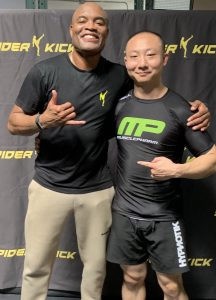
Ben’s been helping athletes cut weight for over 10 years.
Earlier in his career as a strength coach, his athletes would bring in people to handle their weight cuts that did not follow any scientific method. This prompted him to learn the art and science of it by consulting with experts around the world in sports such as judo and powerlifting to learn the most effective and efficient way of doing it.
Now, you can learn from Ben’s hard work, studies, and experience…
We’ve helped Ben organize all of his findings into an easy to follow program.
It’s called The Cut…
Inside The Cut we’ll help you:
Understand the Weight Cut Process
In this book we will focus primarily on short term or acute weight loss as opposed to chronic or long term weight loss . There are significant differences between the two approaches of losing weight: SHORT TERM weight loss is the loss of: Water and Gut/Bowel Contents. LONG TERM weight loss is the loss of: Body Fat and Muscle

Choose the Right Weight Class
Choosing a weight class can be a complex topic. There are several factors that may be outside of your control such as teammates and available weight classes depending on the sport. We provide details on weight loss for various sports, since some weigh in right before competition, while others have up to 36 hours between weigh ins and competition. We’ve laid everything out, so you know exactly what you need to do and by when.
Prepare for the Weight Cut
Unlike most team sports, combat sports athletes generally do not follow a seasonal schedule. During the offseason or in-between competitions, combat sports athletes should focus on maintaining lean muscle and watching out for excessive fat gain. The more muscle mass you have, the more water weight you’re carrying and the more body water weight you can cut. The 2 things you should be focusing on in preparation for the weight cut are Losing Body Fat % and Heat Acclimation.

Navigate The Weight Cut
The starting day for the “weight cut” itself is usually 5 days out from weigh-in day. For example, if you weigh-in on Friday, your starting day would be the previous Sunday. In the event that you have a lot of weight to cut, you may need the starting day to be 7-10 days out from weigh-in.
What To Do After Weigh Ins
The goal after making weight is to replenish what was taken out of the body in order to make the weight. We now shift our focus toward getting to the competition well hydrated with optimal electrolytes and glycogen stores.

Clarify Dangers of Weight Cutting
Take a sport that does not have weight classes and you will see that the advice given to those athletes for optimal performance will be almost the exact opposite of an athlete preparing for a weight cut.
1. Be well hydrated
2. Be well fed with carbohydrate intake on the higher side
If you choose to cut weight then the purpose should be to allow you to go down to a lower weight class where you will be more competitive. Understand that there will be risk versus reward. For example, I do not recommend my beginner Jiu-Jitsu students cut weight when competing in their first few tournaments. It’s unlikely that they will be gaining a competitive advantage that outweighs the negatives from cutting weight. Cutting weight is also one additional stressor that they don’t need.
And More!
Practical examples, frequently asked questions, food lists, time tables, extreme cutting methods, and links to studies related to cutting weight for combat sports.
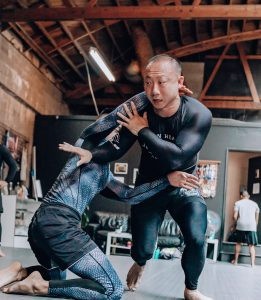
Here’s What Athletes are Saying About Ben:
My first experience with Ben was as a training partner back in 2005. I was an active competitor at the time and would always look forward to my training sessions with Ben, for his ability to analyze matches and his willingness to “pressure test” different styles and methods towards competition. Whether it was jiu-jitsu or MMA, I could always count on Ben’s insight to help the team in their preparation for competition
Having served thirteen years in the United States Marine Corps, I can attest to Ben’s approach and ability to get the best from the individuals that he works with is in line with the methodical and thoughtful approach that we would implement to achieve optimal results. And as the Editor-In-Chief of Jiu-Jitsu Magazine, I have had the opportunity to work with some of the best jiu-jitsu and MMA practitioners of our time and can tell you that Ben’s insight to the work that it takes to be a top competitor is consistent with what the top-level athletes subscribe to.
James Lawson (BJJ Black Belt and Owner of Jiu-Jitsu Magazine)

I originally met Coach Ben through one of my coaches who would constantly talk about his knowledge of Brazilian Jiu-Jitsu, nutrition, and all things training.
My first impression of Ben was how willing he was to share his knowledge. He has since aided me many aspects of life. Either from helping me prioritize my training schedule, nutrition, getting my cardio in check, or managing my mindset when it came to competition, among many other things…
Ben is a unique guy, whose generosity and kindness is beyond reproach. I would definitely recommend him to anyone I meet.
– Zach Ahrensfield (Model and Professional Jiu-Jitsu Competitor)
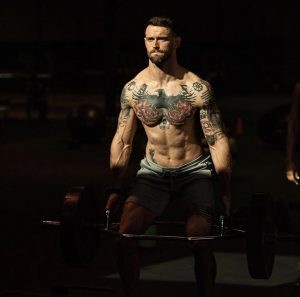
When I was new to LA coach Ben reached out and offered his services. He has become one of my best friends and coaches to this day. I could tell he was smart and well educated, truly knew his stuff. He likes to keep himself informed on the latest science, research, and is constantly learning.
Coach Ben’s guidance has helped me a lot. I‘be rolled jiu jitsu with him at his various schools, and have even crashed in his guest room. Every time I’m in LA I’ll be getting together with Coach Ben.
– Mickey Gall, UFC Fighter
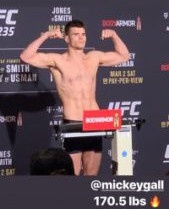
I first met Ben at his Brazilian Jiu Jitsu academy. Seeing me horribly attempt some moves in jiu jitsu (a sport I had just picked up), he was quick to come to my aid and help correct some of my mistakes. Perhaps he saw the spark of potential in me that would eventually lead to my pursuit in competing professionally in jiu jitsu or maybe I was just THAT terrible, but his gracious act of helpfulness, patience, and passion for teaching began the camaraderie between me and him.
As I move further into my jiu jitsu journey, I certainly wouldn’t be as skilled an athlete without Ben. His simplistic and innovative training has made me a stronger and more confident competitor, working with me both as my trainer, nutritionist, and as my jiu jitsu instructor. Whether I needed help recovering from an injury, making weight, or getting better and stronger in specific—jiu jitsu—situations, I could always rely on Ben to know exactly what steps I need to take to get my to the next level.
I would highly recommend Coach Ben to any martial artist, jiu jitsu fighter, or any kind of person looking to better themselves as an athlete.
– Brianne Robertson (Professional Jiu-Jitsu Competitor)

The biggest challenge with making weight is that there are few resources that allow you to understand the weight cut process and help you implement good practices, so you are safe and able to compete at the highest levels.
- What weight class is right for you?
- How much weight should you cut?
- How long do you need to prepare before a competition?
- What methods should you use to cut weight?
- What type of foods should you eat after weigh ins?
- What differences are there between various sports?
Inside The Cut, Coach Ben will walk you thru the entire process…
If you are wanting to improve your weight cut methods, then all you need to do is click the ‘Add to Cart’ button below, fill out a quick form and you’ll have access to the entire program within 5 minutes.

DISCLAIMER
Weight cutting is dangerous and I don’t encourage the use of weight cutting unless absolutely necessary for competition. Cutting drastic amounts of weight can result in permanent damage or even death. Children under the age of 18 should not cut weight. Always use safe weight management practices and do so under the supervision of a professional after consulting your physician.
Please keep in mind that I wrote this book primarily for combat sports athletes. Often times I’m asked by physique competitors and people who want to look better about weight cutting. The weight cutting protocols for physique competitions where the goal is to look good has vast differences. The goal of this book is not to look better, it is to make the contracted weight by using safe weight management practices.

